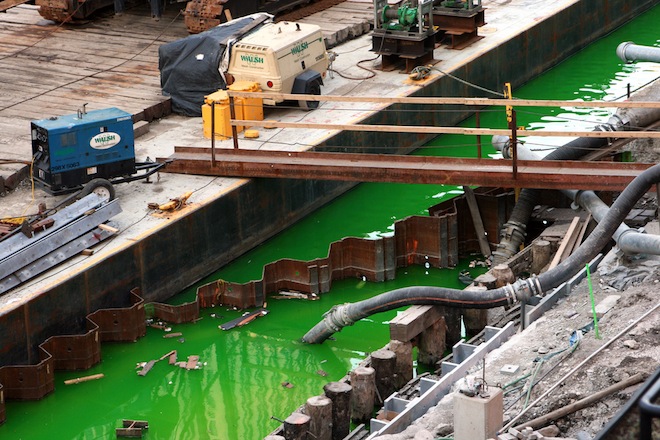Can Google’s PageRank algorithm rid the world of toxic waste? Photo: quinn.anya/Flickr
Researchers at Washington State University and the University of Arizona have shown that Google’s famous PageRank algorithm applies to more than just webpages. It also works with water molecules.
According to a paper published in the Journal of Computational Chemistry, the same math used to determine the relevance of webpages on Google’s search engine can also be used to determine crucial information about a water molecule’s position in a solution of charged chemicals — particularly toxic chemicals. For chemists, the finding is more than just a curiosity. It’s a crucial step in determining the best ways to remove nuclear waste and other toxic chemicals from the world’s water supply.
“Now, you can control the chemistry and force certain reactions to occur,†WSU associate professor Aurora Clark, the paper’s primary author, tells Wired. She gives the example of a waste cleanup team knowing how to force a radioactive chemical like uranium to stick to a mineral substrate — a common cleanup technique. “This gives you the map of where toxic chemicals want to go in the water.â€
Water molecules orient themselves in certain ways depending on what chemicals you mix them with. The three atoms that make up a water molecule — two hydrogens and one oxygen — don’t bond symmetrically. That means the molecule has a positive charge on one side, and a negative on the other. If you add an ionized substance — including everything from table salt to uranium — it shifts the water’s orientation.
What the researchers found was that the Google PageRank algorithm helps determine this geometric positioning. At Google, PageRank assigns a value to a webpage by looking at what webpages link to it — and what webpages link to those linking webpages. It gives Google a picture of a webpage’s position relative to the rest of the net. But it can also give a clearer picture of a water molecule position within a solution — what other modules touch it and what molecules touch those molecules.
“You get added new physics of how the water network is coupled to the reactions within water,†Clark says. “No one’s done it before.â€
At WSU, Clark and her colleagues look at ways of separating nuclear waste from the environment, and a big part of this work is determining the positions of water molecules in charged solutions. Previously, Clark says, researchers had to comb through hundreds of thousands of snapshots of a solution to determine a water molecule’s orientation over time — as temperature, pressure, and concentration changed — but now they can do this in less than an hour. “This represents a large advance in the way we analyze data,†she says, noting that the remaining slowdown is mostly because their systems work sequentially, not in parallel. “Before, we were doing this by visual inspection, literally with our eyeballs. â€
One of the paper’s authors, Barbara Mooney, is also a computer scientist. She was the one who first floated PageRank as a way of simplifying this process, and her software background has rubbed off on the group in other ways. Clark and crew have also open sourced the PageRank code they use to analyze water molecules. The hope is that scientists in other fields of study — including crystalline structures and protein folding — will take the software and build on top of it. “With any dependent process in a solvent, this allows you to capture the network of that process,†Clark says. “It’s got a large range of applications.â€
In 2010, a group in Hungary published a paper that takes a cursory look at how PageRank could be used to examine metabolic pathways and better understand the biological cell. Apparently, Google’s algorithm — named after co-founder and current CEO Larry Page — is more useful than we thought.
“Our goal in search is to help people expand their knowledge of the world,†says Google senior vice-president and Google Fellow Amit Singhal in an email statement sent to Wired, “and we’re delighted to see that our PageRank algorithm is being used to do just that with this innovative and efficient molecular research method.â€
Article source: http://www.wired.com/wiredenterprise/2012/02/google-pagerank-water/

